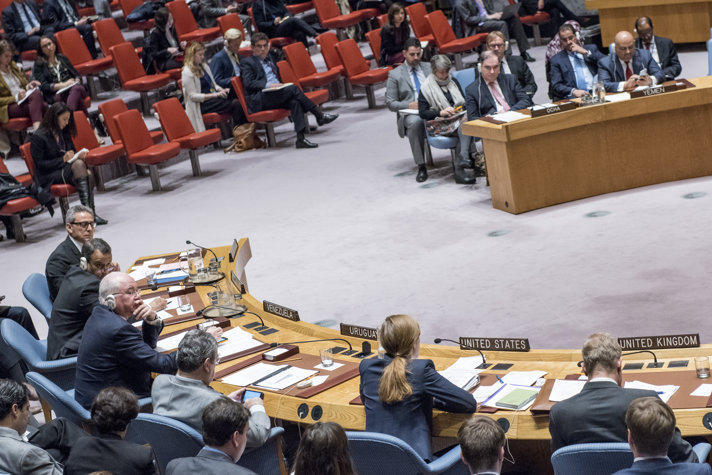This is the UN Security Council
Updated
The United Nations Security Council is one of the six principal UN organs and is responsible for maintaining international peace and security under Article 24 of the UN Charter. Security Council decisions are binding on all 193 UN Member States.

Who is on the Security Council?
The Security Council has 15 members: five permanent members and ten rotating/non-permanent members.
- China, France, Russia, the UK and the US have permanent seats on the Security Council and are often referred to as 'the P5'. These countries have the right of veto.
- The other ten members of the Security Council are elected by the General Assembly for two-year terms. Five of these members are rotated out each year. The seats are divided between regional groups.
Which countries will sit on the Security Council with Sweden in 2017–2018?
In 2017, Sweden will sit on the Security Council with the five permanent members and Bolivia, Ethiopia, Italy, Kazakhstan, Egypt, Japan, Senegal, Ukraine and Uruguay. In 2018, the latter five will rotate out and Italy will be replaced by the Netherlands following an agreement reached between them to share their membership.
What are the duties of the Security Council?
The Security Council's mandate is to maintain international peace and security. Within the framework of its mandate, the Security Council can investigate threats to peace and security, and provide recommendations to prevent or resolve conflicts. The Security Council can also call on Member States to suspend economic and diplomatic relations and take decisions on sanctions. The Security Council takes decisions on the deployment and monitoring of peace operations and has the power to authorise military operations to uphold its decisions and resolutions. The Security Council recommends new Member States and, when necessary, a new Secretary-General to the General Assembly. Under the UN Charter, Security Council members act on behalf of the General Assembly.
What issues are on the Security Council's agenda?
Some of the items on the Security Council's agenda are predictable, such as mandate extensions. However, an important part of the Council's agenda responds to events, which means that it deals with current situations considered to be a threat to international security. Although geographical issues dominate the agenda, thematic issues are also dealt with on a regular basis. So far in 2016, agenda items have included Syria, Darfur, North Korea, disarmament, and women, peace and security.
How are matters prepared by the Security Council?
The Security Council continuously monitors the items listed on the agenda. When a threat to international peace and security arises, a Member State can independently, or on the advice of the Secretary-General, take the initiative to lead the matter. A resolution, which is prepared in closed consultations, is then voted on by the Member States in a formal open meeting. Nine affirmative votes, and no veto, are required for a resolution to be adopted. In addition to resolutions, the Security Council can adopt presidential statements and press statements by consensus.
The Security Council in figures – 2015
In 2015, the Security Council addressed 45 different agenda items.
It held 245 formal meetings and 151 consultations, in addition to informal negotiations.
Sanctions committees, working groups and other subsidiary bodies met a total of 139 times.
Almost 70 per cent of the Council’s meetings concerned geographical issues, of which 54 per cent concerned Africa and 31 per cent concerned the Middle East. Just over 30 per cent of these meetings were thematic.
Two field trips were conducted.
The Council took 90 decisions: 64 resolutions and 26 presidential statements. It issued 128 (negotiated) press statements.
Just over 65 per cent of the Council’s decisions concerned Africa, while 60 per cent of the Council’s press statements concerned terrorism, abuses against civilians or attacks on UN personnel on the ground.
The Council is meeting increasingly frequently. Between June 2007 and June 2008, 219 formal meetings were held, which is almost double the number compared with the same period in 1998–1999.

 X
X